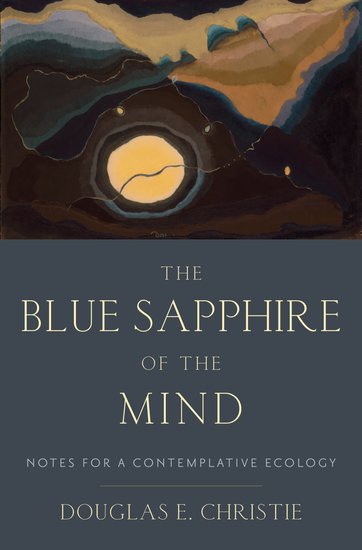Does the world have a voice? Do particular places have a distinctive vocabulary, grammar, and syntax all their own? Can we learn this language, learn to attune our ears to its music and perhaps in this way come to inhabit the world with more care and feeling? These are not new questions, nor are they original to me. The ancient Stoics had a sense of the Logos or Word as a fiery substance moving through all matter. Early Christians (and Jews before them, although not in quite the same way) spoke also of a Word through whom the world came into being and continued to be sustained. Medieval visionaries such as Hildegard of Bingen have expressed this intuition in terms of a prima vox or “primary voice” whispering through all living things. For Henry David Thoreau, one of the critical tasks for anyone wanting to know the world is learning to attune the ear to the gramática parda or “tawny grammar” arising from the life of wild beings. Similarly, the great French writer Jean Giono spoke of the necessity of becoming sensitive to what he called simply “le chant du monde.”
No, these are not new questions. But they have taken on new meaning and urgency in the present moment as the fabric of world continues to fray and ever-greater numbers of places are at risk of falling silent forever. The need to listen, to learn the language of the world has become one of the urgent moral tasks of our time. But what precisely are we listening to or for? A Voice behind or within the world? The simple eloquence of the world itself? And what of the silence behind and within things? A silence that some have argued is primordial, the sources of all language. How might the contemplative practice of listening contribute to the work of repairing the world?

This, as it turns out, is where Chet Raymo and I recently picked up the thread of a conversation begun many years ago at a small Thai restaurant in Cambridge, Massachusetts. We had been invited to Cambridge in the fall of 2000 by Mary Evelyn Tucker and John Grim (from the Forum on Religion and Ecology) to participate in a conference on “The Ecological Imagination: Nature, Place and Spirituality.” I had read Chet’s work before [Honey from Stone: A Naturalists’s Search for God (Cowley, 1995); Natural Prayers (Ruminator Books, 1999)], but this was my first time meeting him. We hit it off, the scientist and theologian finding common ground in our love of particular places (the Dingle Peninsula) and literatures (the Catholic mystical tradition). And we stayed in touch over the years.
Recently Chet sent me a note to let me know he had been reading The Blue Sapphire of the Mind and had written about it on his “Science Musings” blog. I read his comments and sent him a response, which he also posted on his blog. The debate on the possible relationship between science and religion (or spirituality) has become one of the most fraught areas of our contemporary public discourse, and it seems unlikely that this modest exchange will make any significant difference, especially for those who are convinced that there is little point in even attempting a rapprochement between them. Still, there is something worthwhile in the simple act of listening to another speak of his or her own subjective experiences of and feeling for the natural world. Listening and perhaps offering a response arising out of what may well be a very different kind of experience. I make reference to it here as a gesture toward the possibility of further engagement with these questions by anyone who may wish to take them up.
A note about the place and the context that gave rise to the conversation: I refer in the book to a place called the Sinkyone Wilderness (or Lost Coast), one of wildest and most remote places on the northern California coast, a place where I have spent part of every summer for the past fifteen years. It is there that I became acquainted with the White-crowned Sparrow, a bird common to many parts of the Pacific Coast and whose lilting song I came to associate with the plateau overlooking the Pacific Ocean at the Sinkyone Wilderness. Almost every day I would sit on the gnarled, bleached branches of a fallen eucalyptus tree in the field below our cabin. Sooner or later I would hear the song of that sparrow, sharp, sweet, insistent. It became for me an essential part of the “tawny grammar” of that place. And on the occasions when I wandered up the road to Redwoods Monastery to sit in silence and chant psalms with the members of that community, the song of the sparrow subtly entered into and became part of another, sacred grammar. After a while I had a hard time distinguishing them from one another.
Image credit: Photo of the Sinkyone tree by Douglas E. Christie. Used with permission.



Recent Comments
There are currently no comments.